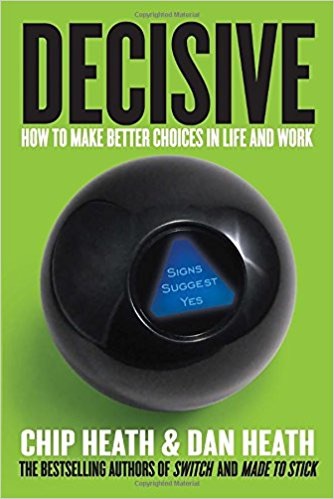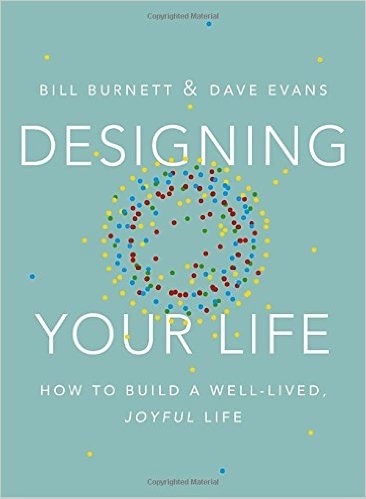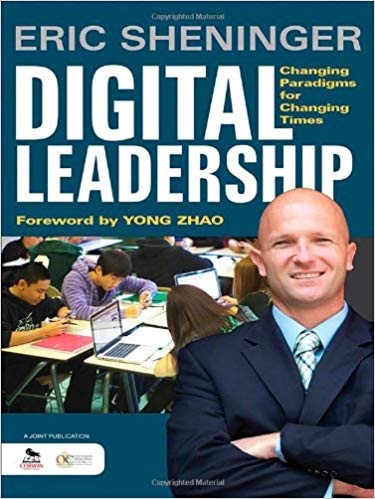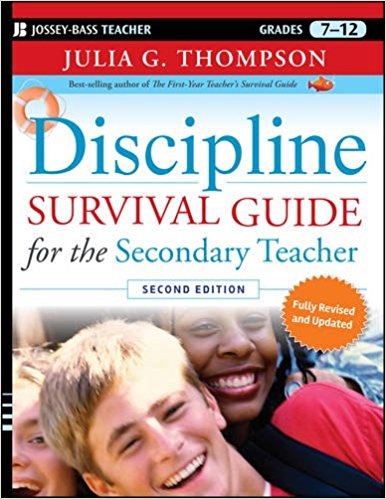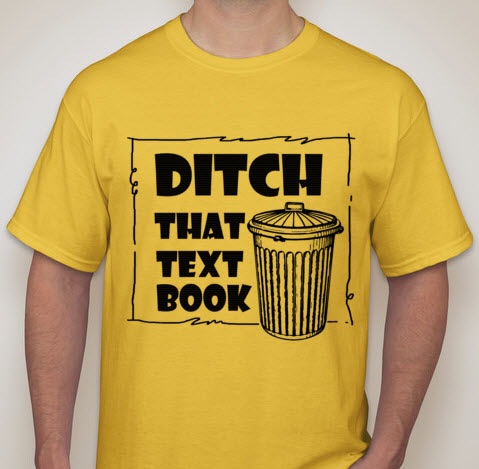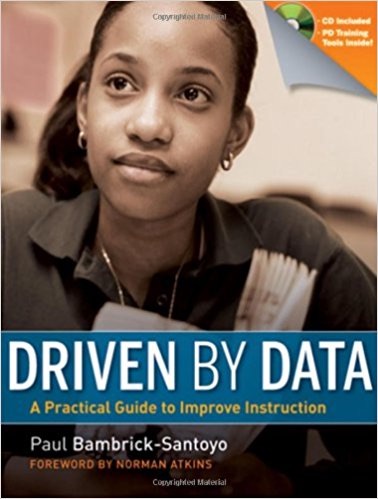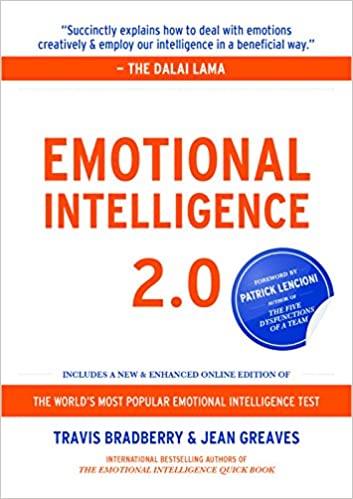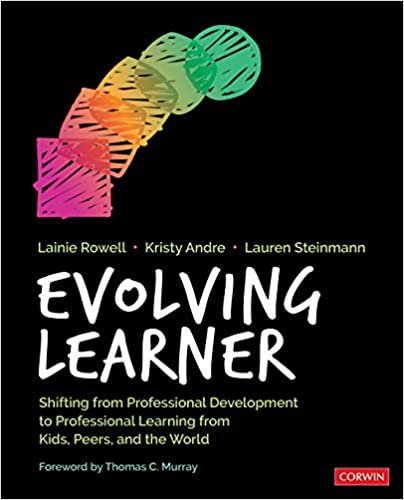Archive for the ‘Leadership Books’ Category
Thursday, March 28th, 2013
Decisive: How to Make Better Choices in Life and Work by Chip & Dan Heath shares research and cool stories that show how our decisions are disrupted by an array of biases and irrationalities. They go on to introduce a four-step process designed to counteract these problems. Their fresh strategies and practical tools will enable you to make better choices at work and beyond. If you want to increase your chances of making the right decision at the right moment, this book is for you. Click the icon at the bottom of any page to buy this important book for yourself and your key colleagues.
The Heath Brothers
- Chip Heath is a professor at the Graduate School of Business at Stanford University. Dan Heath is a senior fellow at Duke University’s Center for the Advancement of Social Entrepreneurship (CASE). They are the authors of the bestsellers Switch and Made to Stick.
- While working on this book, the authors asked that I forego my usually summary approach and do a more traditional book review highlighting a few useful concepts and to use my educational expertise to show readers how to apply them to their life. I have tried to honor this request and thank them for their input.
Introduction
- Chip and Dan start with the key core difficulties that negatively impact our decision making. We think we know everything there is to know prior to making a decision. We also tend to be overconfident in our knowledge of the future and seek only data that confirms what we believe. We let our emotions get in the way, and often present choices in either/or terms.
- Doug: In education, I’ve seen each of these whenever decisions were made whether by myself as principal or by a collaborative process. It is important to challenge your own thinking and say things like “you may have a point” when a colleague disagrees. Everyone knows that they aren’t always right, but it’s hard for many people to investigate the possibility that they are wrong prior to committing to a decision. They are more likely to dig in and defend their position.
Ask: What Else We Could Do/Buy?
- When dealing with budget issues, you should always ask “what else could we buy” if we didn’t buy the item(s) we are considering? A good example today is what could we buy with all the money we are spending on textbooks and standardized testing?
- The vanishing options test would also allow you to consider what to do with an administrative position when someone leaves. Always ask “how else you could accomplish the person’s function, and is there some part of what they are doing that doesn’t need to be done.” I have found that for administrators, the job will expand to fill the day with tasks that aren’t mission critical.
Posted in Book Summaries, Business Books, Education Books, Leadership Books | Comments Off on Decisive: How to Make Better Choices in Life and Work, Heath Bros.
Tuesday, January 17th, 2017
Designing Your Life: How to Build a Well-Lived Life by Bill Burnett & Dave Evans offers time-tested advice for becoming the best version of yourself possible. The advice here can help even if you are already fairly happy with your life. Their website also contains useful resources and supplements to the book.
Bill Burnett & Dave Evans
- Bill is the executive director of the Stanford Design Program and co-founder of the Life Design Lab. He is also a former leader of Apple’s PowerBook product line and CEO of a design consultancy. Dave is co-founder of the Life Design Lab, a lecturer in the Stanford Design Program, a management consultant, and formerly a co-founder of Electronic Arts.
Introduction
- Since only 27% of college grads end up in a career related to their jobs, it’s clear that most end up designing their careers and all need to design their non-career life. While this book is for all of us, it’s the two-thirds of workers unhappy with their jobs and the 15% who hate their work that need it the most. Life is full of problems, and solving them is what design is all about. A well-designed life is constantly creative, productive, changing, evolving, and there is always the possibility of surprise. Life then is about designing something that has never existed before. Keep in mind that passion is something you develop after you try something and get good at it. A key point is to never measure yourself against anyone. The five necessary mindsets covered are 1. Be Curious 2. Try Stuff 3. Reframe Problems 4. Know it’s a process and 5. Ask for help.
1. Start Where You Are
- You need to know where you are and what design problems you are trying to solve. In design thinking, the authors put as much emphasis on problem finding as problem solving. Deciding which problems to work on may be the most important decisions you make. The authors define a class of problems known as gravity problems. These are problems like trying to overcome gravity in that they are not actionable and therefore can’t be solved. The key is to not get stuck on something you have no chance of succeeding at.
- At the heart of this chapter is an activity that lets you take stock of your current status. You are asked to rate from 0 to 100 how you feel about the criteria of 1) Your Health, 2) Your Work, 3) Your Play, and 4) Your Love. As far as love is concerned you should consider all the different types of love you experience, not just love from a spouse or significant other. When you complete this task you will have a framework and some data about yourself. Nex,t you are asked to answer these questions. 1) Write a few sentences about how it’s going in each area. 2) Ask yourself if there’s a design problem you’d like to tackle in any area. 3) Ask if your problem(s) is a gravity problem.
Posted in Book Summaries, Business Books, Leadership Books | Comments Off on Designing Your Life: How to Build a Well-Lived Life by Bill Burnett & Dave Evans
Wednesday, May 29th, 2019
Digital Leadership: Changing Paradigms for Changing Times by Eric Sheninger explains how digital leadership is a strategic mindset and set of behaviors that leverage modern technology resources to improve a school’s culture. It will help educational leaders use social media and Web 2.0 tools to engage students, communicate with the community, and improve professional development at no marginal cost.
The Evolving Landscape
- Eric starts with a warning that if schools don’t adapt to take advantage of the technology students are growing up with, they run the risk of becoming meaningless and irrelevant. He provides a description of what each of these technologies are along with how they can be used to promote learning. He also notes today’s digital learners have many preferences that are at odds with those of the more traditional teachers many still face. They expect to access information quickly, work on several things at once, network and collaborate frequently, they often prefer other media to text, and they want learning to be relevant, active, useful, and fun. Eric also notes that technologies have been overhyped in the past and often look like solutions in search of problems. He challenges the readers to work with him to find the best ways to use the new technologies that our students live with outside of the classroom.
Why Change?
- Everything has changed except schools. Most schools still operate the way they did when they were invented to produce factory workers. Teachers do most of the talking and expect students to memorize what they see as important, and draw on material from a set-in-stone curriculum. Recent reforms are driven by the public and political sectors that feature one-size-fits-all testing just makes things worse. Even the addition of technology has not produced the needed change in pedagogy.
- What is needed are more lessons that require critical thinking, problem-solving, and the demonstration of learning through the creation and analysis of media. This will allow students to put their work on a blog for others to see. This change process can be messy and requires that teachers give up some control. Feedback from students is important here. Schools should add online courses, online field trips, independent study, credit for learning experiences outside of school, and internships. Leaders need to model technology use, support risk-takers, and make sure the staff has access. You can start the change process by having the staff read the free report Expanding Approaches for Learning in a Digital World.
Leading Sustainable Change
- Dr. Spike Cook, an elementary principal, modeled the use of technology for learning and communication for his staff. He rewarded teachers who took risks to follow his lead. As time went by he noticed increased technology use during his observations as many teachers joined him in the social media world.
- Eric summarizes Michael Fullan’s Six Secrets of Change. They include loving your employees, connecting peers, building capacity, and making learning central to all work and interactions. He then warns about the many roadblocks to sustaining transformative change. They include change is hard, lack of time, Lack of collaboration, too much top-down direction, lack of support, negative attitudes, fear, and poor professional development.
How New Milford High Changed
- Here Eric tells the story of how his high school went from ordinary to award-winning. The first change was his own philosophical enlightenment regarding the difference Web 2.0 tools and social media could make. He proceeded to educate himself and his staff. Encouragement, support, flexibility, and modeling were his key efforts. Next, he turned his students loose to help transform the culture. They were granted access to the school’s wireless network with their own devices. Such BYOD programs require a sense of trust that they will use their devices as learning tools. Finally, as innovative practices increased, he felt it was important to share what was taking place within and beyond the walls.
Posted in Book Summaries, Education Books, Leadership Books | Comments Off on Digital Leadership: Changing Paradigms for Changing Times by Eric Sheninger
Thursday, August 25th, 2011
Discipline Survival Guide for the Secondary Teacher, 2nd Ed, (©2011, Jossey-Bass: San Francisco, CA) Julia Thompson takes on what may be the most unpleasant part of the profession and a top reason why teachers leave. She draws on up-to-date research and theory that can help students become more self-disciplined, goal-oriented, and successful learners as teachers enhance leadership skills. She focuses on student motivation, classroom management, relationships, instructional techniques, safety, and high expectations. This 350-page effort is easy to read and can be used as a desktop reference. My summary contains key ideas, but there is a lot more I left out. Every student teacher, beginning teacher, and veteran teacher with discipline problems should have this at their side. Lots of advice for parents too. As a former secondary teacher and elementary principal, I can assure you most of this applies to students of all ages.
Successful Discipline Rests With You
- It is important to take responsibility for what happens in class and to not dwell on who to blame for bad behavior. Outdated practices won’t work with modern students. Class activities should allow students to be active and involved, and let students help each other. Vary the action during a class. Ideally, you will challenge students with things they can attain. Work with students to set goals, watch for signs of trouble before it starts, and work with parents. Use questionnaires to gather interests and opinions and bring in popular culture and real-world connections when possible. Don’t hesitate to allow students to discuss their concerns and adjust your attitude to see them as joyful and vigorous rather than annoying. Be positive rather than cranky and critical. Overreacting only makes things worse. Be respectful rather than confrontational. Be sure to listen. Avoid sarcasm and present yourself as a confident leader. Give positive attention before students seek negative attention. A positive caring attitude is essential.
Take a Comprehensive Approach
- You need to take a broad view and use a variety of methods as the job of discipline is very complex. Do what you can to make the room inviting and use the walls for student work. Work hard on getting to know each student and let them know what you expect. Prepare innovative lessons and have everything ready. Lessons should allow students to be active and usually talk more than the teacher. Focus students on being responsible for their own learning and avoid threats. A class should be a functioning community. You must manage your own stress. If students are agitated take a moment to think and stay cool. Thompson includes a list of common mistakes and ways to avoid them, a teacher self-assessment, a worksheet to develop your plan, and a section on how to put your expectations to work.
Tags: Discipline, Discipline Survival Guide, Julia G. Thompson
Posted in Book Summaries, Education Books, Leadership Books | Comments Off on Discipline Survival Guide for the Secondary Teacher – by Julia Thompson
Tuesday, April 5th, 2016
The genesis of Matt’s DITCH model of teaching starts in 2007 when he was lecturing and teaching from a textbook. He knew the kids were bored and so was he. He was stuck in the old paradigm of using the textbook as the curriculum along with worksheets and multiple choice tests. While I’m always leery of words as acronyms as their authors usually have to stretch things a bit to make them work, the DITCH acronym really works. It stands for Different, Innovative, Tech-Laden, Creative, and Hands-On. These are the hallmarks of Matt’s model that he rolls out in this book. In addition to ditching your textbook, this model also requires you to ditch your curriculum and, perhaps more importantly, ditch your mindset.
Before and After
- Imagine it’s 1904 and you want to have a conversation with the legendary John Dewey who lives in Chicago? Unless you lived nearby, this would be essentially impossible. Today, however, it is possible to have conversations or at least listen to famous educators from all over the world thanks to the Internet.
- If you started teaching when I did, you were probably were much less efficient that connected teachers today who have electronic filing cabinets and many other time saving applications. Today you can take your students on electronic field trips at little or no cost. Things you write don’t rely on good penmanship. Finding information seldom take more than a few seconds. In short, going digital makes your life and your students’ lives much easier.
Posted in Book Summaries, Education Books, Leadership Books | Comments Off on Ditch That Textbook by Matt Miller
Wednesday, August 18th, 2021
Drive: The Surprising Truth About What Motivates Us by Daniel Pink is a must-read for educators and parents alike. Dan summarizes current research and does a great job turning it into interesting and understandable prose that educators can apply to their practice. Every school should have this on the shelf.
Three Types of Motivation
- 1.0 – The basic motivations we need for survival
- 2.0 – Motivations based on direct rewards and punishments. Such carrots and sticks are typically financial in this context. They work for jobs that are routine, which are often the jobs that can be sent offshore or done by a computer.
- 3.0 – Intrinsic motivation, which is conducive to creativity. This allows you to do things for the satisfaction of doing them rather than any monetary reward. Examples include open source software, Wikipedia, learning to play a musical instrument, or doing a puzzle. It is important for nonroutine (heuristic) jobs. In these jobs rules are loosely defined, which requires creativity.
Carrots and Sticks Don’t Always Work
- Pink sites 128 studies that lead to the conclusion that tangible rewards tend to have a substantially negative effect on intrinsic motivation. This is one of the most robust findings in social science and one of the most ignored. (Doug: Educators should check out Alfie Khon’s 1993 book, Punished by Rewards.)
- Studies show that rewards and punishments can extinguish motivation and diminish performance. They focus behavior, which can crush creativity and they can crowd out good behavior. In some cases, they can lead to cheating, shortcuts, unethical behavior and lead to addiction. They can foster short-term thinking at the cost of long-term results.
Carrots and Sticks Aren’t All Bad
- Rewards do not undermine people’s intrinsic motivation for dull tasks where there isn’t any motivation to be undermined. To increase chances for success you need to: 1) Offer a rationale for why the task is important 2) Acknowledge that the task is boring 3) Allow people to complete the task their own way. Another way to offer extrinsic rewards for creative work is to give the reward after the job is finished. Care must be taken so that such rewards don’t become expected. In general, praise and specific positive feedback are less corrosive than cash and trophies (Doug: That means stickers for you elementary teachers)
Tags: Daniel Pink, Drive, Motivation
Posted in Book Summaries, Business Books, Education Books, Leadership Books | Comments Off on Drive: The Surprising Truth About What Motivates Us by Daniel Pink – Updated Summary
Thursday, August 21st, 2014
Driven by Data: A Practical Guide to Improve Instruction by Paul Bambrick-Santoyo offers a step by step approach to preparing your students for high-stakes tests while students work to master standards. While you may be hoping for the current testing madness to end, Paul offers a practical way for your school to out perform other schools with similar demographics while the current tests are still with us. Part two includes specific workshop activities for data leaders.
Paul Bambrick-Santoyo
- Paul is managing director of Uncommon Schools, leading six schools in the North Star Academy network that have achieved some of the highest results in the country. He has trained over 2,000 school leaders nationwide, and is the Data-Driven Instruction faculty member for New Leaders for New Schools, an urban school leadership training program.
Physicals or Autopsies?
- Paul likens the analysis of end-of-year and high-stakes state testing to an autopsy where the purpose is to find out why the patient died. He prefers that educators spend their time looking at the results of interim tests and use them to inform instruction. This is similar to how a physician would use the results of a physical to determine treatment and recommend lifestyle changes. Paul also warns that data-driven instruction is not an elaborate stratagem for promoting “test prep.” While he sees many faults in the NCLB testing culture, he is happy to see educators focusing more on accountability for student achievement, and interim assessments hold them accountable throughout the year.
Excellent Interim Assessments
- In order to be effective, interim assessments must be of high quality, which is seldom what you get when individual teachers slap something together at the end of a unit. The tests need to be in place prior to the start of the school year and be available to the teachers. Every teacher at the same grade level or subject should be using the same tests at the same time. This allows teachers to analyze the results together. Paul recommends assessments every six to eight weeks. Too seldom allows weaknesses to go unrecognized. Too often and teachers may not have time for satisfactory analysis. It is also important that teachers be involved in test creation or selection. Paul is ok with purchased tests as long a teachers get to see them. Some vendors don’t allow this in order to maintain test validity.
- The tests are not seen as an end, but as a beginning. This is because they let the teachers know what needs to be taught and the desired level of rigor. When they are given, the results need to be available soon. (Doug: When I taught I always graded assessments the day they were given, and the students got the results as part of the next class. With some kinds of computerized testing, students can see their results immediately.)
Posted in Book Summaries, Education Books, Leadership Books | Comments Off on Driven by Data: A Practical Guide to Improve Instruction by Paul Bambrick-Santoyo
Monday, June 8th, 2020
Emotional Intelligence 2.0 by Travis Bradberry & Jean Greaves (the book can be found succinctly explains how to deal with emotions creatively and how to employ your intelligence in a beneficial way. There is strong evidence that EQ can be improved with effort and this book can direct that. Higher EQ leads to success on the job and at home so this is a book that everyone can use to forge a better life.
1. The Journey
- All information from your senses has to pass through the emotional part of your brain (the limbic system) before it gets to the rational or thinking part of your brain (the frontal cortex). It’s the communication between your emotional and rational brains that is the physical source of emotional intelligence or EQ. It is emotional intelligence that explains why people with high IQs don’t consistently outperform people with average IQs.
- The purpose of this book is to help you increase your EQ. You start by taking the Emotional Intelligence Apprasal online. To see your scores you will need the code at the end of the book, which is only good for one person. This appraisal provides a baseline against which you can judge your improvement. This is a new feature in version 2.0. You can also retake the test after you finish the book to see how much you have learned.
2. The Big Picture
- Emotional awareness and understanding are not taught in school, but self-knowledge and emotional mastery are required to make good decisions on the job and in life. We have many words to describe our feelings yet all emotions are derivations of five core feelings: happiness, sadness, anger, fear, and shame. Here we find twenty different words to describe each. When emotions are intense they can highjack your rational thinking and cause you to react reflexively. Your reaction to these trigger events is shaped by your personal history. Enhanced EQ can help you recognize triggers and let you respond in a rational manner.
- We all possess the qualities of personality, EQ, and IQ. Of the three, EQ is the one most amenable to improvement. It is also the foundation of a host of critical skills like time management, decision-making, and communications. It is the strongest driver of leadership and personal excellence. It is highly correlated with high-performance and salary regardless of the job. The rest of the book will help you improve your EQ.
3. What Emotional Intelligence Looks Like: Understanding the Four Skills
- The four EQ skills come in two pairs known as personal competencies and social competencies. The first includes self-awareness and self-management. This is where you stay aware of your emotions and manage the resulting behavior and tendencies. Social competencies include social awareness and relationship management. This is where you work to understand other people’s mood, behavior, and motives. Emotions always have a purpose as they shape your reactions to the world around you.
- Self-awareness is a foundational skill; when you have it the other skills will be easier to use. Self-management is dependent on your self-awareness as it gives you information that you can act on rationally rather than reflexively. Social awareness is also foundational as you need to pick up on the emotions of others so you can better manage your relationships. You need to listen well rather than thinking about what you are going to say next when another person stops talking. Relationships require you to understand others and are based on how you treat them over time. This chapter also contains positive and negative examples of all four skills.
Posted in Book Summaries, Business Books, Education Books, Leadership Books | Comments Off on Emotional Intelligence 2.0 by Travis Bradberry & Jean Greaves (the book can be found here)
Monday, August 31st, 2020
Evolving Learner: Shifting from Professional Development to Professional Learning From Kids, Peers, and the World (©2020) by Lainie Rowell, Kristy Andre, and Lauren Steinmann focuses on how teachers need to learn from their students, their peers, and the world at large. They also need to be allowed to have a voice and choice when it comes to their professional learning rather than be exposed to old school one-size-fits-all professional development.
Introduction
- The main idea is to move from traditional one-size-fits-all seat time professional development to innovative learner-driven personalized deliverables. An organization called Learning Forward developed Standards for Professional Learning and this book is a practitioner’s guide to mastering them. As you learn there are things that you have to unlearn, which is difficult. You also have to change your role from expert to learner and to not fear failure. Andragogy deals with the methods or techniques used to teach adults. 1. Adults should be involved in the planning and evaluation of their instruction. 2. Experience, which includes mistakes, provides the basis for learning activities. 3. Subjects should have immediate relevance and impact on their job or personal life. 4. Adult learning should be problem-centered rather than content-oriented.
- While there are many cycles of inquiry with similarities and differences, the authors decided to create their own. Their essential pieces are Focus, Learn, Refine, and Reflect. This cycle is revisited throughout the book. This book is about relationships for learning through a cycle of inquiry. Teachers who have experienced online and blended learning have higher aspirations for leveraging technology. With technology, it is much easier to differentiate learning. Social-emotional learning should also be integrated rather than separated from any learning.
1. Learning from Kids: Honor the Learner
- We need to shift from teacher-driven to learner-driven and by learner, we mean kids and adults. While students are engaged in the learning cycle of focus, learn, refine, and reflect based on content, teachers are engaged in this same cycle regarding their practice. Students should be seen as clientele. (Doug: I prefer customers.) Teachers need to respect each student’s ideas, experiences, and perspectives in order to serve them better. In other words, they need to constantly learn from the students.
Leveraging the Most Abundant Resource in Our Schools
- Students are the most underutilized resource in a classroom. They are critical to personalized learning for teachers. To learn from kids probably requires a change in mindset for most teachers. One survey of middle school students that asked “how do you feel in school each day” gave the top three responses as tired, bored, and stressed. The authors think that this may be because they don’t feel seen and heard. Making learning truly reciprocal may solve this problem. There an extended response here from Adora Svitak. She gave a TED Talk at the age of twelve on the topic of what adults can learn from kids that now has over five million views The response here was given when she was twenty.
What Are They Thinking? Making THinking Transparent to Tailor Instruction and Promote Teacher Inquiry
- Thanks to tech tools it’s possible for a teacher to ask a question and see everyone’s answer. This can greatly aid the ability to do formative assessments. Without such tools, you are likely to get the same kids answering all of the questions. When using these tools be sure to put lesson design first and not the tool. This approach will also give students more processing time as it lets the teacher assess prior knowledge.
- As students go through the grades they ask fewer questions. One way to fight this is to use the 5E’s approach. Here we start with Engaging students by asking an open-ended question. You can use a Word Cloud tool to create an illustration that students can use to Explore the topic further. The Explain part of the lesson can address unanswered questions. Further Elaboration comes next followed by Evaluation. Since learning is messy don’t be surprised if you move back and forth between these steps.
- Next the focus in on students formulating questions. First, the teacher comes up with a question focus contained in the curriculum. Students then independently produce questions without initial judgment of a question’s quality. They prioritize closed-ended and open-ended questions, plan the next steps, and reflect. Questions can even be used as part of assessments as creating questions is a higher-level thinking activity than answering them. The nature of the questions can help the teacher spot misunderstandings and provide opportunities to improve instruction. Peer instruction can also help as the teaching peer is dealing with something recently met. By circulating during this process teachers can learn new ways to explain concepts. You can even have students take tests in pairs after they take them as individuals and compare scores.
Ownership of Learning for All: Shifting From Students Who Consume Content to Learners Who Create Content
- Here we encounter the concepts of miinimally invasive education (MME) and self-organized learning environments (SOLEs). They are based on the work of Sugata Mitra who set up computer kiosks in poor neighborhoods starting in New Delhi, India. When he returned he was amazed at what the children had taught themselves with no help. Certainly these children owned their learning. We then hear about High Tech High, a charter school in San Diego, CA that accepts students via a lottery. They operate on the principles of equity, personalization, authentic work, and collaborative design. The only tech-based question they ask prospective teachers is “Are you willing to learn from your students?”
- One author tells a story of how she took over a kindergarten class and gave each student a computer tablet. She gave them four minutes to figure out the features of the drawing app and then teach them to the rest of the class. Then they had to show a number using manipulatives, take a picture of it, bring the picture into the drawing app, and annotate it. The vast majority had no trouble and those that did watched a peer and completed the task. Their teacher was amazed. This activity leveraged the learners in the room and produced artifacts that could be used to analyze the progress of each student. Students enjoyed the challenge, the chance to be creative, learning something new, and collaborating as they overcame their fear. Note that students here had voice and choice.
- Now we look at a number of specific learner-driven practices. Included are project-based learning, competency-based learning also known as mastery or performance-based learning, blended learning, and universal design for learning. There is an interview with Eric Marcos, a math teacher from Santa Monica, CA who’s website is MathTrain.Tv. He started making video tutorials for his students who soon wanted to make their own. In a way, they put him out of business. Among the many benefits are other family members learning math at home from student-generated tutorials.
- The rest of the chapter focuses on social-emotional learning (SEL) with short interviews of two teachers who use InspirED to help their students with this important learning. In the end, there are resources that help you internalize the key concepts as well as resources you can read, watch, listen to, and explore.
Posted in Book Summaries, Education Books, Leadership Books | Comments Off on Evolving Learner: Shifting from Professional Development to Professional Learning From Kids, Peers, and the World by Lainie Rowell, Kristy Andre, and Lauren Steinmann
Friday, December 19th, 2014
Excellent Sheep: The Miseducation of the American Elite and the Way to a Meaningful Life by William Deresiewicz uses abundant qualitative research along with his own experience to paint a picture of a dysfunctional system and offer suggestions for how to fix it. There is serious advice for students and parents so they can avoid the traps the system offers. The system does a disservice to elite students who are almost uniformly wealthy as it screens out children from lower classes. While the rich have always had educational advantages, the disparity is worse than ever. Click the icon at the bottom of any page to purchase this thought provoking book for yourself and any policy makers, parents, and students you know.
William Deresiewicz
- William was a professor at Yale until 2008. He is the author of the landmark essays The Disadvantages of an Elite Education, and Solitude and Leadership, and the book A Jane Austin Education: How Six Novels Taught Me About Love, Friendship, and the Things That Really Matter. He is a frequent speaker on campuses around the country, a contributing writer for The Nation, and a contributing editor for The New Republic and The American Scholar.
Introduction
- William believes that our elite universities have produced students who are smart, talented, and driven, but also anxious, timid, and lost, with little intellectual curiosity and a stunted sense of purpose. They are trapped in a bubble of privilege, heading meekly in the same direction, great at what they do, but with no idea why they are doing it. His real critique in the book is aimed at the adults who’ve made them who they are. He also aims to help students rescue themselves from the system. Even though it’s aimed a college students, there are good lessons here for high school students, their parents, and educators everywhere.
1. The Students
- The students in this book appear to be the winners of the race that adults have made of childhood. While they appear healthy, beneath the surface we often find toxic levels of fear, anxiety, and depression. Surveys indicate that emotional well-being has fallen to its lowest level in the 25-year history of the study with half reporting feelings of hopelessness, and a third saying that depression has made it difficult to function. There is also an increase in the use of antidepressants, antianxietals, and stimulants like Adderall.
- Starting in grade school they are constantly jumping through hoops that include school work, athletics, music, and other activities that leaves them no time and no tools to figure out what they want out of life. Once they get into a selective school, they often have no idea why they are there. They have learned how to be a student, but not how to use their minds. Most are good at coloring inside the lines with little or no passion about ideas. There life is all about the accumulation of gold starts, and they can’t imagine doing something that can’t be put on a resume. Rather than learning as much as possible, they seek to do as little as possible as long as they get A’s. Most students dress, look, and act the same so what passes for diversity looks more like 32 flavors of vanilla. The selection process produces students who have only experienced success, but this hides the fact they live with a constant fear of failure. They are risk adverse and are increasingly seeking fewer and fewer different majors.
Posted in Book Summaries, Education Books, Leadership Books | Comments Off on Excellent Sheep: The Miseducation of the American Elite and the Way to a Meaningful Life by William Deresiewicz
